Heating and hot water: how to independently provide the
Comfort and comfort in a modern city apartment or country house is impossible without high-quality engineering networks. The most important systems are hot water and heating. Not only the comfort and health of people, but also the durability of the building itself depends on the correctness of their design and construction.

General provisions
Residents of city apartments connected to centralized coolant supply networks do not think about the choice of a suitable climate network. However, the owners of their own houses and country cottages must independently decide which system to install in their house for hot water supply and for heating.
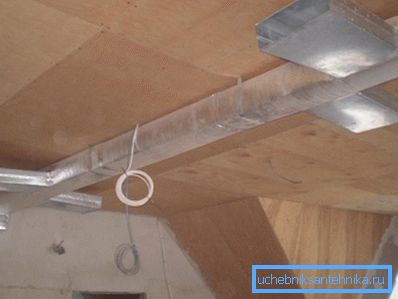
There are many different solutions to this issue. The most popular of them are given in the table.
| Type of heating | Description |
| Air heating | It is necessary to install a special device that sucks in air from the street, warms it up and distributes it through the rooms of the house with the help of pre-equipped air ducts. The disadvantage of this solution is noise at work, a large amount of dust and high operating costs. A plus is the absence of a heat transfer fluid that can freeze. Another point - the inability to organize uninterrupted supply of hot water without buying and installing additional devices. |
| Electric | This refers to the installation of individual heaters operating on electricity. These can be air convectors, infrared heating panels, oil radiators, and so on. The main advantage of the solution is ease of installation: you just need to place the device in a convenient place and plug it into an outlet. The disadvantage is the high cost and the inability to regulate the microclimate in the house from one point. As for hot water, then using these devices to satisfy such a need is not possible. |
| Water heating | The structure of this engineering network includes a heating boiler, radiators and pipes connecting them with each other. The heat source is the boiler. The energy generated by it is transferred to radiators through the water circulating through the pipes. The charm of such a system is universality, efficiency and economy. The price of installation is not very high, but the cost of operation is one of the lowest. In addition, installing a double boiler, you can provide yourself with an unlimited supply of hot water. |
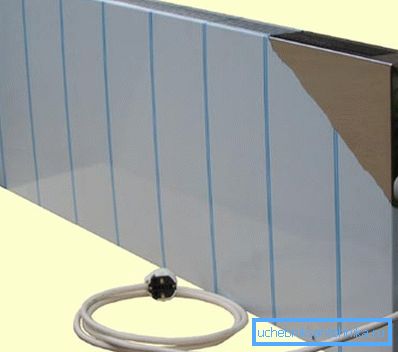
Many technical characteristics and consumer properties of water heating systems and hot water supply depend on what kind of heating boiler you have chosen to install in your home. These units differ from each other in power, the type of energy used, the method of heat exchange and so on.
Let us dwell on this issue in more detail.
The choice of heating unit
Heating boiler - the heart of an individual network of hot water and heating. The main difference between heaters from each other is the type of fuel used.
There are the following types of equipment:
- solid fuel;
- liquid fuel;
- gas;
- electric.
Tip! The first two are very difficult to install and operate. In addition, with their help, it is practically impossible to organize hot water supply in a house without using additional equipment (indirect heating boilers, storage water heaters, etc.).
Therefore, it is recommended to opt for a gas or electric boiler. Of course, only if there is a technical possibility to install such equipment on your site.
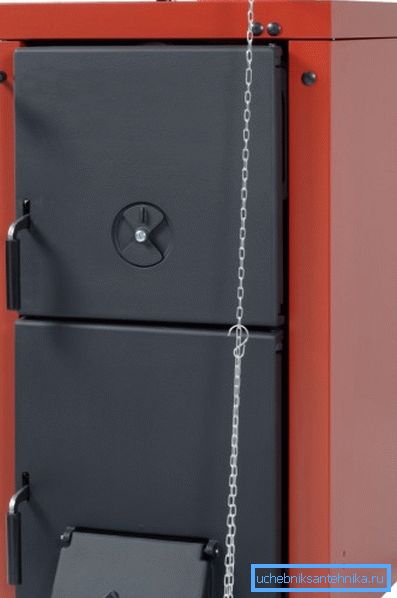
Further, only two of these options will be considered in detail as optimal for the organization of its own engineering network.
Gas boilers
Now in private homes you can find the following types of gas heating equipment:
- AOGV (gas water heating devices) - These are outdated models of boilers, which, although they are currently being manufactured, are practically not mounted in new houses and cottages.
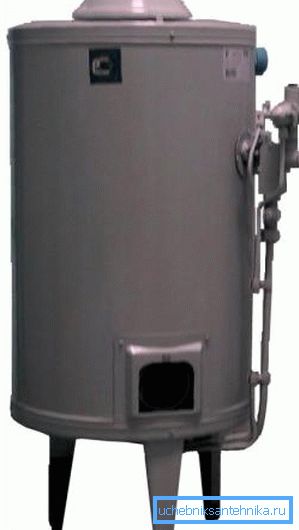
Such units differ in massive size and not very large capacity. In addition, they do not have an additional circuit that heats domestic water. It is notorious for increased gas consumption and an inconvenient control controller that does not allow the use of electronics to adjust operating modes.
On the other hand, the boilers are already equipped with an expansion tank and can operate completely autonomously, that is, without an electrical connection (provided that your house has a heating network with a natural way of circulating coolant).
- Gas boilers with an open combustion chamber. These are modern quite powerful devices, often made in the floor version. Many models are already equipped with expansion tanks and circulation pumps, so you do not need to buy additional equipment.

For the preparation of hot water meets the second heat exchange circuit in the combustion chamber.
The disadvantage of the described devices is the necessity of arranging a special room-boiler room. The room should be well ventilated, as the boiler burns air in a confined space, and have a vertical chimney with a natural draft, through which harmful substances resulting from burning will be discharged.
- Gas boilers with hermetic combustion chamber. Such units can be installed either in a separate boiler room or in any other room equipped with gas and water pipes.
To operate the boiler chimney is not needed. Air intake and removal of exhaust gases occurs through a horizontal two-chamber coaxial channel. Traction is organized with the help of a turbine.
The heating device is already equipped with an expansion tank, a circulating pump and an electronic control system that allows you to change the operating modes of the unit depending on the temperature in the room and outside.
The presence of hot water provides a second circuit.
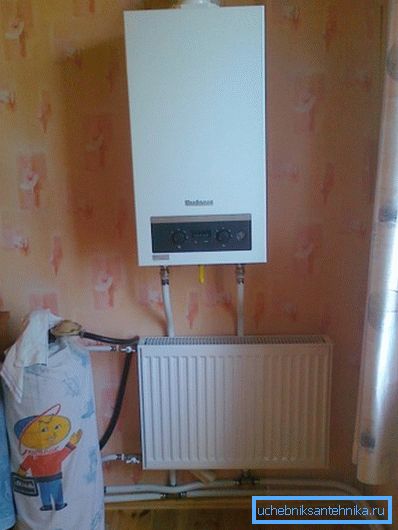
It should be noted that the second and third types of boilers are dependent on electricity. Therefore, in order not to freeze in case of accidents on power lines, it is recommended to purchase and install an uninterruptible power supply or a diesel generator.
Note! If you want to design a heating system to sit down with your own hands, you need to take into account that the installation instructions for gas equipment allow its installation only to specially trained staff after obtaining the appropriate permission.
Electric boilers
Heating equipment operating on electric energy is no less efficient than gas. With the help of electric boilers you can heat a house up to 600 square meters and provide yourself with any amount of hot water.
In addition, the installation of such a device does not require prior approval by the regulatory authorities.
Despite all the advantages listed above, electric boilers heating the coolant are used very rarely. And then as a backup or additional source of heat.
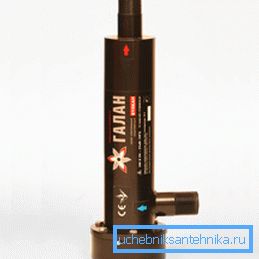
What is the reason for this state of affairs?
Consider more:
- Electricity as an energy carrier is one of the most expensive types of fuel. Despite the efficiency of the boiler, this option can not be called economical.
- The public electrical infrastructure is often not designed to connect high-powered equipment. Therefore, before buying and installing the device, you should make sure that the wires, the meter, the automatic machines in the box and other accessories will stand and not melt.
If you do not consider other options besides the installation of an electric boiler, in order to minimize costs, it is recommended to do the following:
- to warm the house to reduce heat loss through its structural elements;
- draw up documents for receiving discounts (subsidies) for the purchase of electricity;
- Consider options for the use of solid fuel and oil boilers, as well as alternative energy sources.
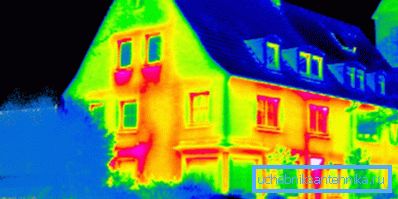
By the way, for safety net in case of breaks in power lines, a combined boiler can be installed in the house, which will heat the house with wood or diesel fuel.
To solve the issue with hot water in two ways:
- Buy electric boiler having two heating circuits.
- Purchase a storage or instantaneous water heater, mounted separately from heating equipment.
Having decided on the choice of the heating unit, you need to proceed to the purchase of devices that transmit thermal energy of water to the air in the room. We are talking about batteries, without which it is impossible to install a water climate network.
The choice of radiators
To begin with, it should be said that there is no universal answer to the question of which radiator is more suitable for installation in your home. It all depends on the area of the premises, the quality of the coolant, the method of water supply, the existing heating equipment, the number of windows, and so on.
Consider the pros and cons of the models on the market:
- Cast iron. They have a large inertia and not very attractive appearance. Well withstand high pressure coolant, but may be damaged by hydraulic and pneumatic impactors. More suitable for installation in apartments equipped with heating networks with centralized flow of coolant.
- Steel. One of the most inexpensive and fairly effective options. Steel heating panels are characterized by good heat dissipation and attractive appearance.
For their work you need a minimum amount of coolant. Minus - susceptibility to corrosion. It is impossible to drain water from the system even in summer.

- Aluminum. Have the highest power and excellent appearance. Due to the special shape of the heat exchanger, the air is heated not only by wave energy, but also by convection.
A huge minus - the fragility and susceptibility to corrosion. The slightest deviations in the chemical composition of the flowing water lead to a leakage of the aluminum battery.
- Bimetallic. The best option at the highest price. They have a steel frame, which is put on an aluminum heat exchanger. They have all the advantages of aluminum batteries, but lack their disadvantages.
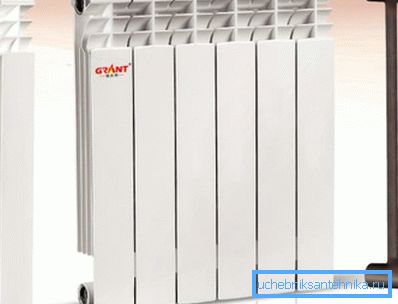
Heating system installation
The design of the described engineering system conditionally consists of four main stages:
- installation of a heating boiler;
- fastening of radiators;
- laying of pipelines;
- installation of accessories and additional elements.
Start by installing the boiler as the most important element. Here it is necessary to remind once again that only trained and experienced specialists can work with gas equipment, otherwise irreparable consequences are possible.
Anyway, the following recommendations should be followed:
- Choose a place to install or hang the boiler should be so that its pipes and taps always provide quick and easy access. This will facilitate both scheduled maintenance and emergency outages in the event of an accident.
- It is forbidden to place the wall boiler close to the ceiling surface. Between the upper edge and this structural element of the room should be at least 0.5 meters of free space.
- Pay special attention to the choice of fasteners. It is better to use the brackets that come with the kit. It is possible to hang the boiler only on a capital wall protected by a gasket made of fireproof material.
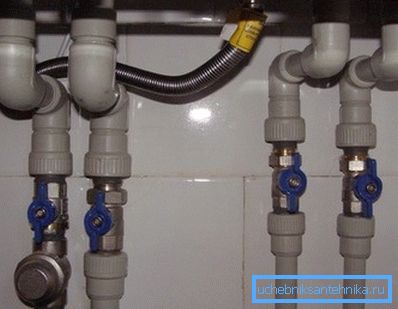
After finishing with the boiler, you can go to the batteries.
Here, too, there are enough features, non-compliance with which will certainly affect the quality and efficiency of heating:
- Radiators need to be placed under each window opening, otherwise the heat loss will be too large, and it will be difficult or too expensive to achieve a comfortable microclimate.
- Batteries need to be placed perfectly flat and on the same level. Firstly, it will allow to avoid the formation of scale and mineral deposits, and secondly, it will not bring dissonance into the interior of the room.
- It is necessary to fix heating devices rigidly. Otherwise, the water coming into it, the battery will tremble, and produce unpleasant sounds that will not add comfort to residents.

As for the other elements, the laying of pipes and additional devices should not cause you difficulties. You just need to choose a suitable layout for you and clearly stick to it.
Conclusion
Hot water and heating are the most important components of comfort. A well-designed engineering network will allow you to enjoy the benefits of civilization and save money on utility bills. However, in order to extend the life of the climate system, it must be properly operated.
You can learn more about this in the video in this article.